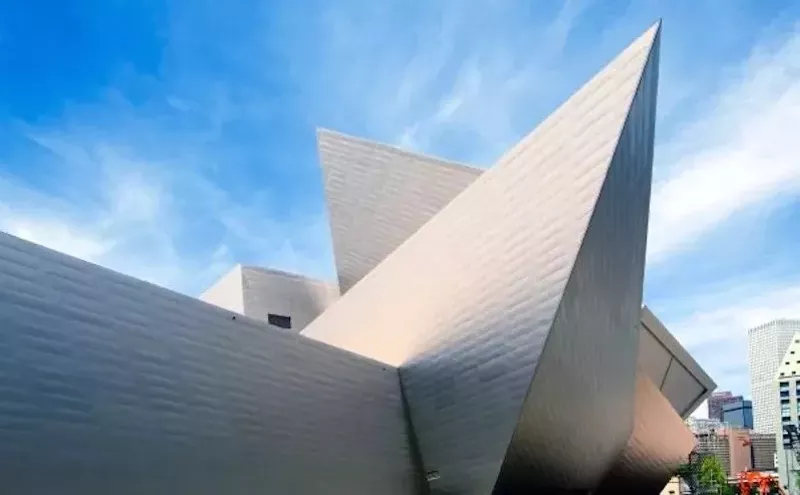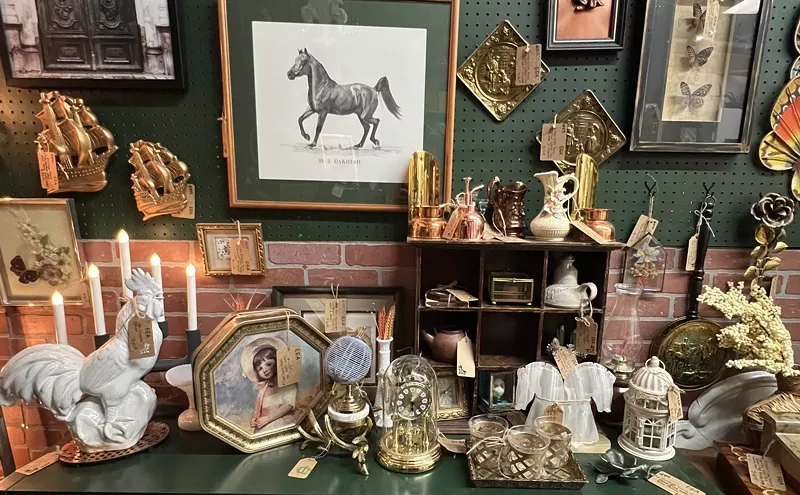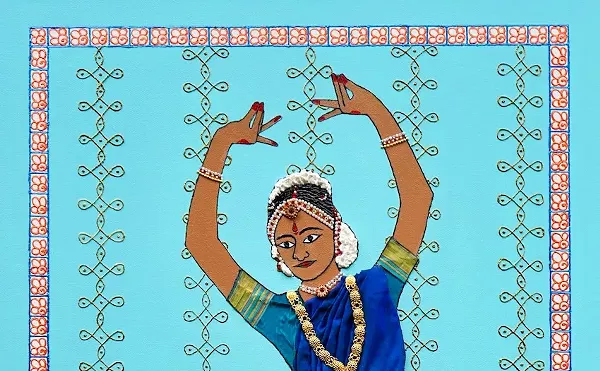Not even the great westward expansion of the late nineteenth century took place on this scale. Yet, unlike the way west, which has spawned entire genres in literature, film and the fine arts, the way north has barely been talked about. It did, however, inspire at least one artist: Jacob Lawrence. In the early 1940s he painted a group of sixty closely interrelated panels immortalizing this tremendous movement of people. The resulting mammoth painting cycle is the subject of Jacob Lawrence: The Migration Series, now on display at the Denver Art Museum.
The traveling show was organized by Elizabeth Hutton Turner, an associate curator at the Phillips Collection in Washington, D.C., which has been the repository of thirty of the Lawrence paintings since soon after they were presented in 1941. The remaining thirty were acquired at the same time by New York's Museum of Modern Art. The current exhibit marks the first time in more than fifty years that all sixty paintings have been shown together.
Lawrence, who now lives in Seattle, was not a southern migrant himself. "I had never even been to the South until the series had been completed," he said during a recent visit to Denver. But he was familiar with the subject. "My father was from North Carolina, my mother from Virginia," he told the crowd at a reception held to mark the opening of the new show. "Thus I had Southern mores."
Born in Atlantic City, Lawrence moved from Pennsylvania to New York's Harlem as a teenager in 1930. Harlem was then the center of black culture in America, and the Harlem Renaissance was in full swing. Lawrence blossomed in this environment. "Harlem was vital at the time," he recalled. "You could hear the great writers talk. The influence of Harlem remains with me sixty years later."
But it was also the time of the Great Depression, which had a profound effect on the art world. "Most galleries were forced to close," said Lawrence. Yet the artist called the 1930s "one of the most creative periods of the century." What made the difference, he said, were New Deal programs such as the Works Progress Administration and the Fine Arts Project.
In 1935, when Lawrence was only eighteen, he was hired by the FAP to produce two paintings every six weeks for $23 per week--"which was good money." He remained with the FAP until 1940. (Lawrence feels that federal support for the arts at the time was essential to his career, and imminent budget cuts at the National Endowment for the Arts are heavy on his mind. "Many of the WPA murals were covered later because they were deemed pornographic or too political," he said. "Times repeat themselves.")
Lawrence was recruited into the FAP by the noted African-American sculptor Augusta Savage. Her decision to lend him support was "the highlight of my life," Lawrence said. But Savage's traditional three-dimensional sculptures had no discernable effect on Lawrence's painting and printmaking. Instead, Lawrence embraced Modernism. And though he claims that "feelings were more important than art influences" in providing him with inspiration, it's impossible not to see his work as being totally of its time, closely related to the work of other now-famous artists then working in New York.
The Migration Series was intended to depict the struggles of the oppressed--a concept then being broadly embraced by many artists. The idea that art can be used to tell a story was another mainstream idea. Taking advantage of the resources of Harlem's Schomburg Center for Black Research, Lawrence devoted weeks to researching the Great Migration. But in retrospect, he said at the reception, the research he did wasn't nearly as important a factor as the people he met. "It was the Harlem community--teachers and librarians," he said, who ultimately provided the concept for the series.
Lawrence was doubtless affected by Haitian painting and folk art, two of the many aspects of black culture he researched at the Schomburg. However, the draw of the almost exclusively white art world centered in Greenwich Village also shaped his approach. Specific stylistic affinities can be seen in Lawrence's paintings and contemporaneous works by older and more established white artists like Milton Avery, Stuart Davis and Ben Shahn. Like those Modern artists' works, Lawrence's paintings are characterized by compositional simplicity, a strong graphic sense in the design of the pictures and the use of bright colors employed against dark ones. He was surely aware of the work of the other Moderns, since he, like Davis and Shahn, was represented by Edith Halpert's Downtown Gallery.
Significantly, Lawrence's relationship with the Downtown Gallery, where The Migration Series was first shown, marked the end of segregation in the art world. Even before his teachers, Lawrence became one of the first African-American artists to be represented by a commercial gallery. Previously, only public institutions provided blacks with exhibition opportunities.
The sixty individual paintings in The Migration Series, each one numbered, are all the same small size--eighteen by twelve inches, still an art-supply-shop standard. Some are vertically oriented, some horizontally, an arrangement that creates visual interest without sacrificing unity--which is particularly important, since Lawrence saw them "not as individual panels but as a single work of art." In fact, Lawrence says he was so committed to the series' "oneness" that he "worked the colors," painting the black portions of all sixty panels, then the yellow portions, and so on until the series was complete.
In addition to the paintings in The Migration Series, another historical exhibit meant to connect us with Lawrence and his time is presented in an adjacent gallery. There are some problems with this presentation, not the least of which is that it includes a reproduction of one of the panels in an elephantine enlargement. I think it's the first time I've ever seen a reproduction in an art museum. What were the out-of-town organizers thinking?
Another, better exhibit that also complements the Lawrence show is The Narratives Continue, which features work by black artists from the permanent collection of DAM's Modern and Contemporary department. A real standout here is the masterful 1963 painting "The Procession," by an African-American in Paris named Bob Thompson. The painting reveals a debt to Lawrence's work, particularly The Migration Series. Later this fall the show promises a rare sighting of Floyd Tunson's very different "Before and After," a mural-sized acrylic painting. Unfortunately, Tunson's from Colorado--the reason, apparently, why he's forced to time-share gallery space at the museum.











